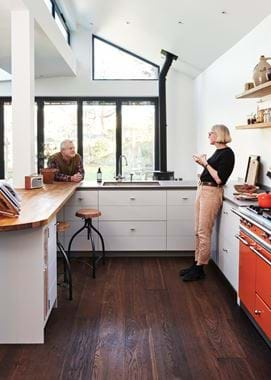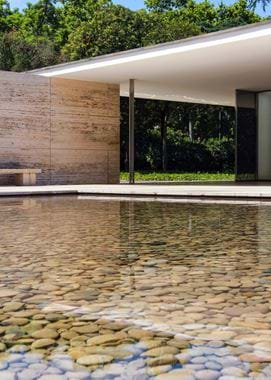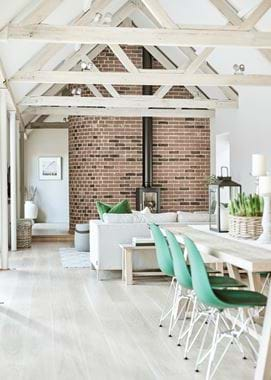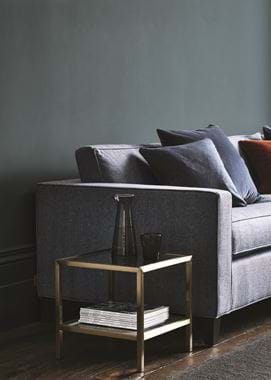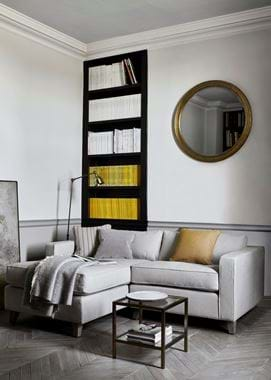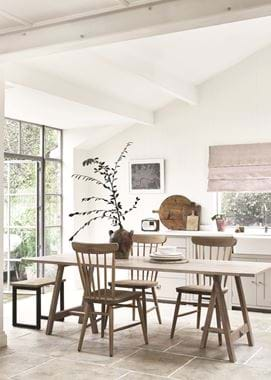Why modernism still matters
Why modernism still matters
This spring, we’re focusing on the idea that less is more; the idea of gathering around you only investment pieces that you’ll love for years to come, making for a calmer, more considered home. It’s about buying less, but buying better, and opting for simpler designs and colours that never go out of date.
As part of this, we started to think about the modernist movement and how it can help us tap into timeless design. It’s a huge subject – spanning much of the 20th century and countries around the world – so we’re only presenting a snapshot of it here. But looking at just a few of its biggest achievements gives an insight into why it can be good to pare things back.
First things first, it’s important to remember that modernism was essentially about optimism. Its roots lie in the Industrial Revolution and the invention of new materials like reinforced concrete, steel, cast iron and plate glass, which started to happen around the middle of the 19th century. But modernism only really got going in the days after World War One. It reflected a desire for fresh beginnings, regeneration and the idea of a positive, progressive future. The war had speeded up the invention of machines like the car, the domestic radio and the jet engine; it needed new, inspiring design to match. German architect Walter Gropius, who founded the famous Bauhaus design school in 1919, summed up the spirit of the era when he wrote: ‘There is one comfort for us: the idea of a glowing, bold concept of building, rushing forward to bring forth the happier time that must lie ahead.’ The poet Ezra Pound had a favourite saying that became modernism’s slogan: Make It New.
In 1910, architect Adolf Loos argued that decoration was no longer needed in the modern era in his essay ‘Ornament and Crime’; his belief helped set the tone for modernism’s simple, streamlined shapes. Traditionally, design and craft had sought to convey the idea of heritage; now, they were about looking forward. Buildings like Le Corbusier’s Villa Savoye near Paris, designed in 1927, and Mies van der Rohe’s Barcelona Pavilion of 1929 did this by focusing on clean, unfussy forms filled with only minimal furniture. Clutter, they thought, would bog people down and slow the freedom of modern living.
Another important aspect of modernism was the way it viewed the relationship between buildings and the objects inside them. Architects would often design complete spaces, from the exterior walls right down to the furniture and colour schemes. Le Corbusier, for instance, created boxy leather and chrome seating to go in his houses, and even had his own colour system for interiors – a palette of nature-inspired shades such as teal, yellow, earthy red and sandy white. This holistic approach to interiors – treating all the separate elements as part of an organic whole – still chimes for us today.
Modernism’s high point was the 1920s, when it flourished around the world in various forms. The Bauhaus in Germany produced iconic designs like Marcel Breuer’s tubular steel furniture (inspired by the handlebars of his bicycle, another modern invention); in France, Art Deco formed a strand of the movement, and in America, they had the ‘streamlined’ look, all dynamic, fluid curves.
The movement had a second surge after World War Two, which we now think of as the ‘mid-century modern’ look. It shared many of the principles of early modernism, including its optimism and its love of visually light, spare furnishings. The plywood furniture designed by Charles and Ray Eames and Robin Day in the 1950s is a good example, as are the wooden chairs created by Scandinavian designers like Hans J Wegner and Arne Jacobsen. They believed that good design should be simple and made to last – Wegner’s famous Wishbone Chairs are meant to be used for life and passed down to future generations.
Although modernism eventually shaded into postmodernism during the 1970s – which was a bit more decorative – many of its ideals still shape our daily lives. Every time you admire a pared-down, functional, space-saving piece of furniture, the principles of modernism are at work. Think about our own collection, like the Shoreditch sofa with its neat, boxy shape, or the Hebden dining table, whose trestle base has a utilitarian touch that any modernist would love.
There are also our metal pendant lights, like Imperial – modernism often borrowed industrial styles like this. Or the Limehouse kitchen, with its clean, straight lines. You could even recreate a modernist colour scheme with our nature-inspired paints: Mustard, Teal and Burnham Red, teamed with whites, would all meet with Le Corbusier’s approval.
Le Corbusier’s often remembered for his maxim ‘a house is a machine for living in’, which has sometimes led to modernism being wrongly described as cold and unfeeling. What’s much less known is that he also said: ‘The home should be the treasure chest of living.’ For us, that’s the heart of what it means to be modern.

